
Best restaurants in Santiago de Compostela
A curated selection made by our local experts with the best restaurants in Santiago de Compostela, a beautiful and historic city in Galicia. … Read More
Our team of local experts have hand-picked the best restaurants in Madrid. You will find the best restaurants and places to eat in Madrid Spain, suitable for all different budgets. Enjoy local gastronomy!
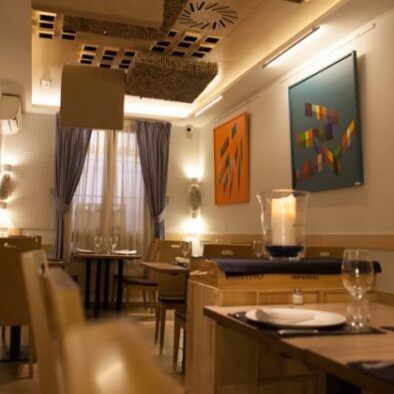
Garcia de la Navarra is a family-owned bar and restaurant located in between the Retiro Park and Cibeles square. You may enjoy their exquisite tapas in the wine bar area or opt for fine dining in the restaurant. With over 700 wine references in their wine list, it makes its bar area our favorite wine bar near Cibeles square and the City hall. Their menu is based on seasonal products and this explains why one of the most interesting dishes is the daily suggestions. This wine bar near Cibeles also offers the possibility to try many of the wines by the glass. One of our top picks due to its perfect location, the selection of excellent products, and the dedication of the family in charge which translates into a fantastic service.
Style of this restaurant
What started as a solution to keep flies out of drinks (namely wine) has become a type of food and a fantastic informal way to sample high-quality ingredients and dishes, eat adventurously, and in an affordable way. Some important things to bear in mind: do not get intimidated by a crowd at the bar. On the contrary, when you search for tapas bars or restaurants the first thing you do is to look for people: high turn-over implies you will not get dried-out food. Some bars offer raciones (dinner plate-sized) but also half raciones smaller tapas (saucer-sized). The good thing about the small versions is you can try more things. Prices may vary if you stand or enjoy a table. This especially applies to the terraces. Tapas are also referred to as pintxos (in Basque country) or pinchos.
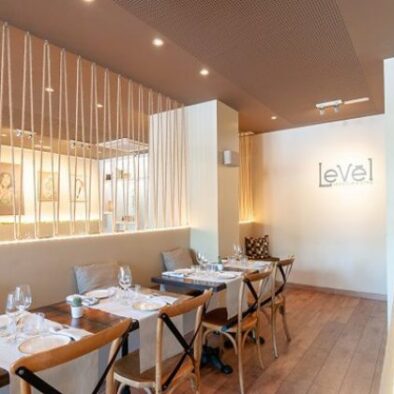
Levél Bistro is a restaurant that offers vegan food next to the Retiro park in Madrid. They are just in front of the park (facing the Florida park) . They are 100% vegan, something not easy to find in Madrid and specialize in raw food and desserts. You will find veggie burgers (red beans burger), delicious crepes or lasagna. This area of Madrid is full of locals, and it is just a few minutes’ walk from the lake at El Retiro. This restaurant is, without a doubt a good option for vegetarians and vegans alike and if you want to continue with a plant-based diet during your stay in Madrid.
Style of this restaurant
Restaurants described as “vegetarian” are places where you can be sure to find vegetarian and vegan options. An increasing number of restaurants in Spain provide vegetarian dishes, but it is not as common as veggie lovers would like. We strongly recommend searching carefully in case you are really strict with your diet

This restaurant offers a good selection of wines and innovative Spanish gastronomy near the Prado Museum, Botanical Gardens, and Retiro Park. The restaurant also offers a good selection of local wines and unique vermouth. The restaurant is small and well-decorated. There is also a street terrace (the street is not too noisy). The Spanish Farm offers is a great value restaurant near the Prado Museum. This restaurant aims at providing fresh ingredients and seasonal products from local providers.
Style of this restaurant
Spanish gastronomy derives from a very complex history and the influence of many cultures, but also a very diverse landscape. There are very large differences from region to region and despite Spanish gastronomy is meant to be “Mediterranean”, local dishes are to be found in each region or province. There are some very famous “national dishes” like paella or fideua from Valencia, cocido from Madrid, Gazpacho from Andalusia, Pan amb tomato from Catalonia, pintos from Basque country, octopus from Galicia and the list goes on and on… A restaurant offering traditional Spanish gastronomy may opt-in its menu to offer a selection of some of these dishes.
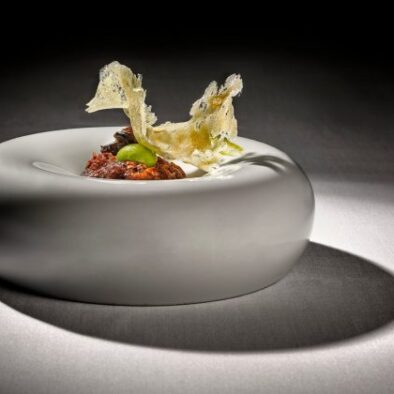
You might miss the penthouse restaurant of Ramón Freixa if you aren’t paying attention. The Catalonian chef, the owner of 2 Michelin stars, is responsible for the excellent food served in this amazing restaurant situated on the second to last floor of the ” The Principal” Hotel. The restaurant is elegant and luxurious and offers amazing views of Madrid from its terrace. Ramón Freixa is one of Spain’s top chefs, recipient of 2 Michelin stars, and Ático is his project in Madrid. Atico by Ramon Freixa is one of our top picks in Madrid.
The mediterranean cuisine is synonimus of health. Generous use of olive oil, garlic and onions are the basic ingredientes for many recipes. Seafood, vegetables and fruit

Propaganda 12 wine bar centers their cooking around wine. They offer over 350 varieties of wine to be paired to perfection with the excellent Italian dishes (sadly for those that leave the kitchen.
Menu
Propaganda 12 offers a wide variety of antipasti, homemade fresh pasta, and a daily selection of seafood.
One of the commandments at Propaganda 11 is to experiment. They go beyond the traditional clichés that imply certain wine and food pairings. Do not expect a simple fish with white, red with meat rule at Propaganda 12. Let´s start with a simple, yet powerful thought. Most of us think about food, a dish we would like to try from the menu… then wine comes after. At Propaganda they are ready to turn things upside down and propose you to choose a wine you would like to taste and then, and only then, to consider which food is a good match!
Despite this may not be your first wish (after all you are in Spain!,) at Propaganda they specialize in Italian wines and they have a wide selection of wines and regions.
The menu is composed mainly of Italian recipes, though you will also find some recipes from other countries. Desserts are mainly Italian, though for cheese they offer a wider selection that includes other international classics
Location
Its location makes this wine bar near Gran Via a great option for either lunch es or dinners during your stay in Madrid. Brunch is also served at Propaganda 12 which can be accompanied by a cocktail or champagne by the glass. A great way to spend the morning with friends. Propaganda 12 is located in Calle Libertad, already in the fashionable district of Chueca. In this post you can find other recommendations with places to eat in Chueca., Madrid’s most gay district crowded with boutique, design shops, and interesting bars and restaurants.

Located right next to the Plaza Mayor of Madrid, on Cuchilleros street is Sobrino de Botín, the world’s oldest restaurant. Sobrino de Botín has been in business, in one form or another since 1725. The name “Botín” pops up in numerous texts of several famous Spanish authors over the centuries, some dating back even further to 1621.
Sobrino de Botín currently occupies 4 floors of the nº 17 of Cuchilleros street. The street is named after the knife makers that use to occupy the shops on this narrow street. The building still maintains the original 16th-century facade, making it all the more authentic and interesting. The restaurant’s furniture also maintains the 16th-century style with small wooden tables and chairs. The ceilings are low and the walls are lined with relics from the restaurants past. The restaurant has a staff of over 70 people that serve around 400 meals a day.
The restaurant specializes in traditional Castilian cuisine, a style known for its roasted meats and copious and rustic dishes. The restaurant features a traditional wood-burning oven that has not been fully turned off since the restaurant opened its doors, surviving the Spanish Civil War and the 2020 coronavirus pandemic.
It is said that Francisco de Goya actually worked at Botín in the kitchens at the age of 19, before becoming a painter. Ernest Hemmingway was a regular at Botín whenever he visited the capital and actually wrote about botín in his novel “The Sun Also Rises”. Many other famous authors have written about Botín as well: Graham Greene, in Monsignor Quixote, Frederick Forsyth in The Black Manifesto and Cobra, and Indalecio Prieto in his book My life speaks of the “delicious bartolillos of Botín”
History
The restaurant was founded by a Frenchman named Jean Botin and his wife in 1725. The original name of the establishment was Fonda Española. Fonda is an old Spanish word used to describe an establishment that offered food and lodging, but that didn’t offer the same luxuries as a proper hotel.
The restaurant’s famous wood-burning oven was added in 1868 after the restaurant underwent some remodeling. When the Botín’s finally passed away, the restaurant was inherited by their nephew, Cándido Remis, and the name of the establishment was changed to Sobrino de Botín, which literally means Botín’s nephew. Also in 1860, the establishment stopped offering to lodge becoming a full-on restaurant. In 1920 the restaurant opened a now-defunct outdoor restaurant in the famous Dehesa de la Villa park, slightly north of the city center.
At the beginning of the 20th century, the restaurant moved on to belong to the current owners, the Gonzalez family, who would go on to open a second location in Mexico which also features an exact replica of the original kiln found in Spain. One of the pieces of memorabilia that is hung on the walls of the restaurant currently is an official recognition of the Government of Spain of Botín being mentioned in the classic Spanish novel Fortunata y Jacinta, by Benito Pérez Galdós.
Specialties
As we mentioned before, Botín serves Castilian and Madrid cuisine, but the real highlight are the roasted meats. In the center of Spain, restaurants that specialize in roasted meats are known as “asadores” and the stars of the show in this region are the roast suckling pig and roasted lamb, and at Botín it’s no different. Both of these dishes are superb and should be anyone’s main focus when ordering at Botín, but you can’t go wrong with anything purely Castilian on the menu: migas, Sopa Castellana, Sopa de Cuarto de hora or desserts like pestiños, bartolillos or flan.
How much does it cost to eat at Sobrino de Botin
First off, if you are interested in eating at Botín you should make a reservation with plenty of time, as it’s one of Madrid’s most visited eateries. Once you have secured your table, it will cost you about 40 € per person, not the cheapest meal out there but definitely worth every penny.
You can discover other great places to eat in Madrid in our restaurant section.
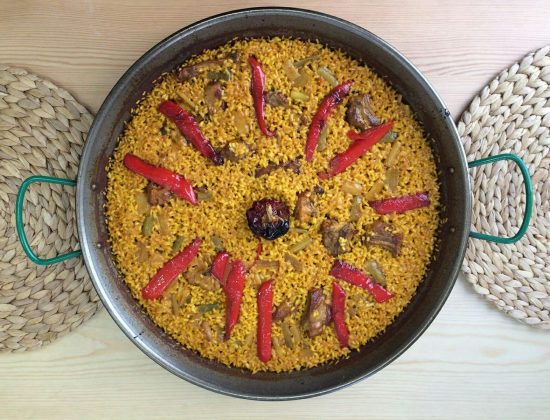
A slice Valencia right in Madrid’s Rastro. You are immediately transported to the Mediterranean coast of Spain when you walk in Allioli Valencian Food, a small, quaint eatery run by two life long friends that wanted to bring the best of the best of Valencia to Madrid. And they specialize in the most typical dish of this region: Paella. The stick to the most authentic recipes and use 100% Valencian products. A very good option to enjoy paella near el Rastro (2 minutes walk from Ribera de Curtidores) Their artichoke and spring garlic paella are particularly delicious. The wines, the beer, the vermut, the desserts, etc. everything in Alioli is 100% Valencia. Be sure to make reservations ahead of time.
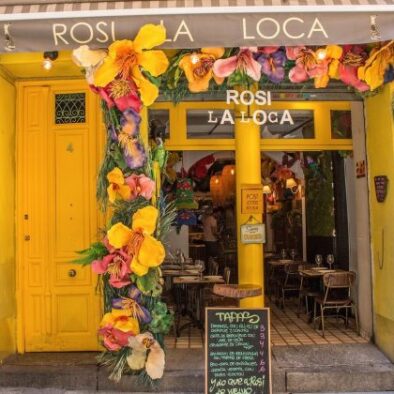
Hablar de Rosi La Loca Taberna puts a modern twist on traditional Spanish cuisine. This quaint and cute little restaurant is located right in the center of town and their menu offers a wide variety of dishes that highlight the quality of ingredients: fresh cheese mousse with red pepper jam and peanuts, the egg carbonara Parmentier, the tropical ceviche made with the fish of the day mango and corn or the pork tenderloin with special sauce and country fried potatoes. Their desserts are also worth a try: warm brownies with ice cream or the coconut with grilled pineapple. This small restaurant is fun and it despite it is more than tapas, it is a great option in any case to enjoy tapas near Plaza Mayor or Sol.
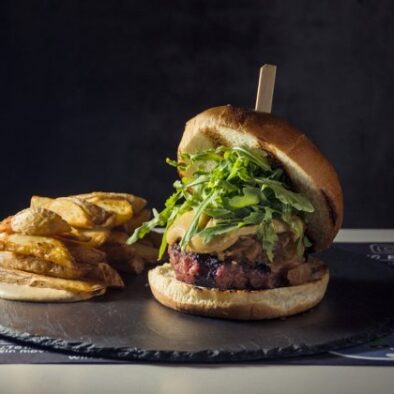
Situated right by the Plaza Mayor in Madrid, Sublime Dream Food offers up a wide variety of delicious fast food style munchies that were created to be equal parts tasty and healthy. The main staple is their burgers which you can build yourself or choose from the wide variety of versions offered on the menu. Sublime puts a lot of care and thought into their recipes like their homemade nachos, the smoked ribs, the wide variety of salads and homemade desserts. This restaurant is a very good option to enjoy burgers near the Royal Palace of Madrid

Right by Opera square and metro station. Ouh Babbo is a good Italian restaurant near the Royal Palace of Madrid and the Royal Opera house. We find this little piece of Italy in Madrid: Ouh Babbo. Here they specialize in traditional Italian cuisine from Naples and Sardinia made with ingredients imported directly from Italy.
Looking at the restaurant from outside, it looks smaller than it actually is. The overall atmosphere is modern and with the elegant decoration. At the door, you will find a certificate issued by the Italian consulate that certifies that authentic Italian cuisine is served at this restaurant. A marketing geek? Well, the certificate, looks real!
One of the highlights of the restaurant is the oven. It is made with volcanic rock and experts from Naples were commissioned to make it and to get it installed at Ouh Babbo
Menu
Overall Review
Ouh Babbo also has a traditional Neapolitan wood-burning oven, makes use of italian ingredients, and has a very good location for leisure travelers to Madrid. It is with no doubt a good option if you feel like enjoying Italian near the Royal Palace. We believe it may be a bit over-priced, but this is not an unexpensive location in Madrid.
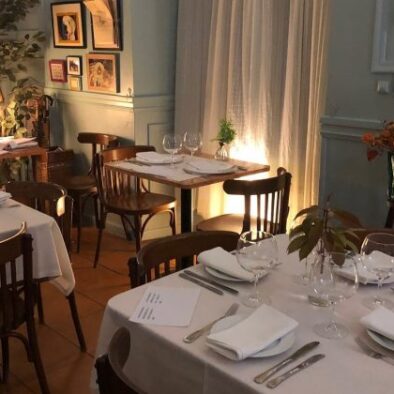
Classic Riojan cuisine in a cozy setting, right next to the Royal Theater, which more closely resembles a house dining room than one of the top Rioja style restaurants in Spain’s capital.
Pilar and Isabel, in charge of the kitchen at and the dining hall respectively look to create a warm and comfortable experience and develop a loyal client base, and they do so with excellent service and delicious traditional dishes such as the bacalao a la riojana, the wine stewed oxtail, the “Algarabía” croquettes or the sauteed gizzards and beans which are all out of this world.
A great choice if you are looking for a restaurant near the Plaza de Oriente
Algarabia offers classic Riojan cuisine in the heart of Madrid. The restaurant is quaint, inviting, and romantic and the food is excellent, as is the wine menu.
Looking at the restaurant from outside, it looks smaller than it actually is. The overall atmosphere is modern and with the elegant decoration. At the door, you will find a certificate issued by the Italian consulate that certifies that authentic Italian cuisine is served at this restaurant. A marketing geek? Well, the certificate, looks real!
One of the highlights of the restaurant is the oven. It is made with volcanic rock and experts from Naples were commissioned to make it and to get it installed at Ouh Babbo
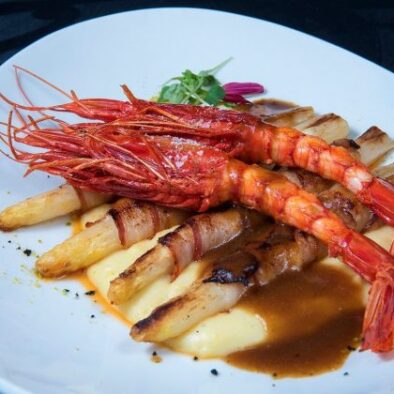
GastroVía 61 is pure Madrid. The cuisine is as Castilian as it can get and the ambiance is 100% Madrid: from the music to the decoration to the red carnations on each table.
Here you will find great homemade cooking and on Thursdays, don’t miss the Cocido Madrileño at this Madrid-style restaurant.
The GastroVía 61 team innovates with dishes inspired in Madrid and its gastronomy. The team seeks to build a healthy menu and pays attention to the use of local and regional ingredients.
An interesting item in Gastrovia´s menu is the “Little Gourmets” menu, with dishes designed and adapted for children.
The names used for all dishes are inspired in local customs from Madrid city, its traditions, and history. In order to be able to “navigate” the menu, the restaurant offers a glossary where terms are explained and anecdotes are explained.
The names of some of the dishes are particularly rooted in Madrid´s soul and big fun too! You will find dishes named after La Movida madrileña that took place during the 1980s or from more traditional festivals like the Fiesta of San Isidro every month of May in Madrid.
The menu offers a clear and decided commitment to traditional cuisine. Locals from Madrid enjoy “platos de cuchara”, a term that refers to traditional recipes eaten with a spoon. At GastroVia 61 a good number of such recipes are found.
An attractive item in the menu is brought by the mix of land and sea ingredients in some of the dishes.
Location
Located in the Mayorazgo Hotel, a stone’s throw away from Plaza España. The restaurant offers a very central location and it is close to some of the city´s top attractions, and also to many hotels.
Service
GastroVía 61 also stands out thanks to the amazing service. Restaurants located at hotels are sometimes criticized because they miss character or personality. This is for certain not the case of Gastrovia 61. The restaurant retains however the top quality of service present at top hotels.
Overall Review
GastroVia 61 is an excellent choice if you enjoy tasting local ingredients and want to feel and taste the essense of Madrid at an intimate setting. The selection of background music and songs about Madrid adds to the experience. Other details contribute to this feeling too: tables are named after famous squares in Madrid. You could enjoy your meal at Table Plaza Mayor, our Puerta del Sol, for instance. Our review of Gastronvia 61 is very positive and we believe it is one of the top restaurants in Madrid to “taste the roots” of the city.

The Torres brothers are famous chefs in Spain. Their TV show has been successful for years and they were always eager to open a restaurant in Madrid, and you can tell they have well done!. They opted for a restaurant that could offer fine dining near the Royal Palace, a location that can suit both locals and visitors to Madrid alike.
They set up shop right next to the Royal theater in, what use to be, one of the stables inside the elegant Hotel Meliá Gran Palacio de los Duques.
Menu
The Dos Cielos menu developed alongside Damián González who runs the kitchen and exudes talent, technique, and care. If you are looking for a restaurant that offers fine dining near the Royal palace Dos Cielos is your place.
The menu is short, with some 15 dishes displayed. But you should not be misled by the rather short number of options; that may not always ease the task of selecting your meal! And this Is exactly what happens at Dos Cielos. Part of the menu is composed of dishes that bring new light to traditional ingredients from Madrid.
Overall Review
A fantastic option to enjoy fine dining near the Royal Palace. The restaurant offers a short menu, well balanced and with dishes that are generous, well-presented, and rooted in Madrid and the chef´s family culinary tradition.
The tableware and the cutlery have been carefully selected and it almost seems the tables, with its blackboards, marble and wood, have been chosen to enhance the display of the dishes served. Everything is thought out, measured and the venue is perfect for this purpose too: brick walls, leather on the seats, large windows that bring loads of light to the dining area.
A really pleasant restaurant indeed, romantic, local, with great service and excellent food. The wine list, by the way, is also excellent.
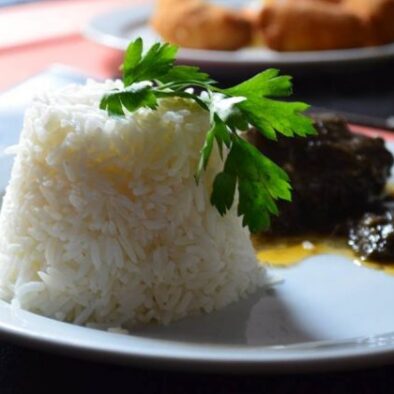
African gastronomy is still a great unknown for people in Madrid. There are few African restaurants and they are amongst the least known in the city. Exotic Subsaharan African cuisine is what you will find at El Mandela, our favorite African restaurant in Madrid.
Located in the heart of Madrid, next to the Royal Theater, there is a no better option to enjoy this style of cooking in the city.
El Mandela restaurant is a tribute to Africa. The atmosphere, the decoration, the dedicated staff, the menu, anecdotes about African dishes and even ocassional African music live performances, all contribute to a great experience.
The Menu
The restaurant offers a simple menu with dishes from different regions of Africa. Each dish is explained in detail. There are African teas, drinks, and wines from South Africa.
Some of the dishes you will find on the menu are the koky from Cameroon, a kind of tofu pasta made up of beans. The Acheque, from Ivory coast, the Thiep Yape from Senegal, or the Mokimo from Kenya.
Overall review
This is a great African restaurant in Madrid. It’s an immersive experience: from the decor to the music, to the wines and coffee, everything in El Madela is Africa.
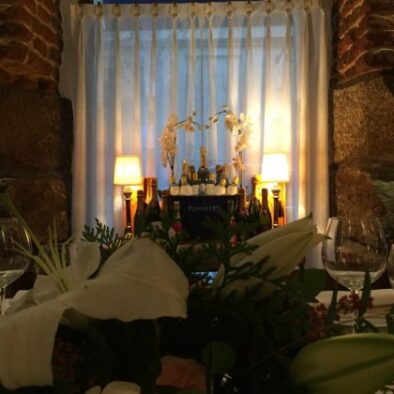
La Esquina del Real is an excellent French restaurant in Madrid at a fantastic location.. This cute little restaurant, run by chef Jesús, is reminiscent of a Parisian bistró. If you want to enjoy good French cuisine in Madrid, La Esquina del Real restaurant is a perfect restaurant. La Esquina del Real opened in 91 by the hand of the renowned chef Marcel Margossian tanned in French and Swiss stoves. Duck, game and sauces have always been present at La Esquina
Surrounded by a decoration where stone and brick play the most important role (there are experts to believe these stones were part of the old Arab wall of Madrid), the menu offers a journey through the gastronomy of the neighboring country inspired in a bistro.
Menu
La Esquina del Real offer delicious French dishes out of a tiny kitchen made with care, talent, and good taste.
The menu is clearly divided into Salads, Starters, Fish, Poultry, Meats and Desserts
The specialty is their homemade foie mi-cuit and you can’t miss it with their steak tartar either. Like most optionsin the menu, those in love with the steak tartar will enjoy at La Esquina del real one of its best versions in Madrid: a plate of minced, seasoned and raw sirloin meat treated with care and well-presented. The secret for the quality of their steak tartar lies in not using an electronic meat grinder. At La Esquina they prepare the meat with a knife. This is a very important detail but they do not forget either the quality of the meat, which at La Esquina is the ear of the sirloin, the juiciest part. The use a local provider from La Sierra de Madrid for their meat. They chop it with a knife right before it is going to be served, and it is also dressed at then, with a special sauce that has been a house secret for years! Tempting, isn´t it? We share a recipe to enjoy this sort of experience at home too.
You will also have to put your diet on hold and taste their amazing desserts: dark chocolate crocantie on a bed or praline or their Bulgarian yogurt ice cream.
The wine list includes some French classics, but you can also expect Spanish red wines and sweet wines (PX or Moscatel wines), a perfect match for their foie!
Location
Their location right next to the beautiful Plaza de Oriente and a few meters from the Madrid Royal Palace, makes it very convenient for tourists that walk from the palace or Debod Temple back to their hotels.
Overall review
La Esquina del real offers a very romantic atmosphere and it is with no doubt a fantastic French restaurant in Madrid. This is a great option if you have been visiting the Royal Palace or are close to the Debod temple during the evening.
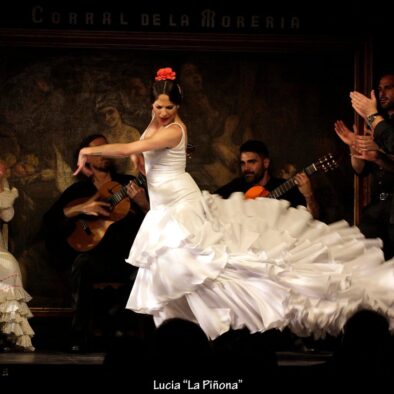
This tablao has an amazingly talented team on hand. Blanca del Rey, the headliner, performs some of the best flamenco you will see week in and week out. David Garcia, former Michelin star chef, will move you just as much with his dishes. Some of the best food and flamenco you will find in Madrid and very convenient as a flamenco show near the Royal palace to fit into your itinerary.

A small fusion restaurant with a Venezuelan twist in the heart of Chueca. In the kitchen: chefs with a deep understanding of international cuisine, in the dining room a warm and professional waiting staff and on the plate high-quality international fusion dishes. The al pastor pork fried won tons with pineapple and chili are a highlight as well as the ceviche, the oxtail and mushroom croquettes, and the Pekin duck. Without a doubt, Kuoco 360 is one of the best places to enjoy good burgers in Chueca district.
Menu
In the menu you will find original croquettes, a crispy wonton in which Chinese and Mexican cuisines go hand in hand, Caribbean-inspired dishes with a touch of Thailand, hamburger cooked at low temperature, and fried ceviche or grilled octopus. A few excellent desserts and a shortlist of wines and beers.
Overall review
Kuoko is one of those restaurants where you have a hard time deciding what to eat from the menu. We love it, but it may lack the local touch you would like to enjoy being in Madrid. if you have already had your “local dose”, and you feel like enjoying modern fusion food, then Kuoco 360 can be a perfect choice.

A great option for poke if you are in the Chueca neighborhood in Madrid. More of a “to go” option, you can pull up a barstool and enjoy your freshly made bowl in the Hawaiian-themed local. This is a very good option if you enjoy healthy poke bowls.
Pokes are of Hawaiian origin and they have become a healthy food option that transforms fast food. it is tasty, has taken over the first rows of many restaurants, bookstore counters, office tables, social networks …
Menu
The poké bowls have lots of things in their favor: they are very healthy (a fish base usually accompanied with rice, seaweed, vegetables, seeds …), they are simple to prepare, they are tasty, they are satiating, they allow lots of combinations, and are colorful, great for a picture that can be shared!
Poké House fresh ingredients prepared on a daily basis. The rice is prepared in a special machine and all the toppings are replaced several times a day to ensure freshness.
Overall Review
If you enjoy pokes and would like something healthy and quick during a long day of visiting Madrid, Poke House can be a perfect choice for you. its location in Chueca makes it a good option for those in need of a stop whilst walking the Gran via in search of the next tourist sight.
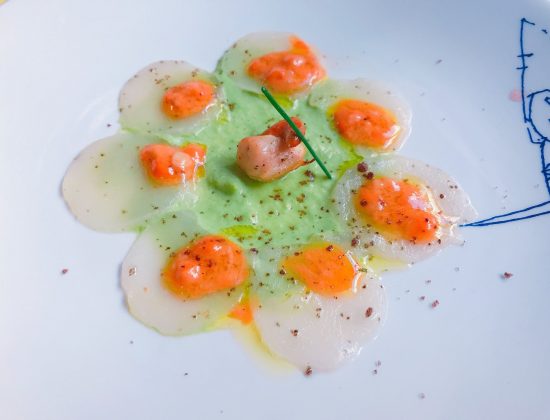
A staple of the Chueca neighborhood, Arce never disappoints.
When Arce opended in Chueca the nights in the district were wild and influenced by the spirit of La Movida. But during the daytime the streets recovered their traditional spirit and locals visited the San Antón market and some of the old taverns in the area.
Today Chueca has changed dramatically and it is not what it used to be. Any visitor will find today’s boutiques with an eye put a millennial clientele and modern tapas bars menus that embrace global recipes. The food landscape is today very different from what it was when Arce opened, but they have stayed loyal to their philosophy. Arce is probably the most traditional option amongst the quality restaurants in Chueca. There are also designer stores with organic food on the shelves… None of these existed when Arce opened.
Pokes are of Hawaiian origin and they have become a healthy food option that transforms fast food. it is tasty, has taken over the first rows of many restaurants, bookstore counters, office tables, social networks …
Menu
They offer a variety of dishes that highlight seasonal ingredients. The father/son duo of Iñaki y Unai Camba, is brimming with talent and whip up delicious dishes with whatever is fresh at the market that day.
Far from fashion or a recent obsession with technology, Arce is above all a place to enjoy seasonal food. Neither traditional nor fashionable. Neither intellectual nor conventional, Arce embraces a menu where the product is far more important than anything else. The philosophy at Arce is similar to what we found in Santi Santamaría or in Abraham García (the owner and soul at one of our favorite restaurants in Madrid: Viridiana, which unfortunatedly closed)
Overall review
Arce is one of Madrid’s top fine dining experiences and for sure one of the best options to enjoy fine dining in Chueca. This is not a restaurant that will please you if you enjoy only design restaurants and menus where only the latest technologies are used. At Arce, the most important thing is the ingredient, and the role of the chef is just to humbly serve what nature has provided. Delicious food in a friendly environment.
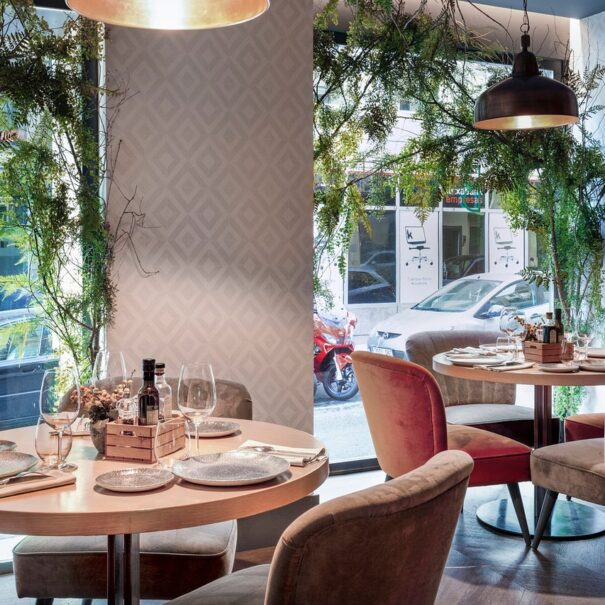
This vegan restaurant has evolved a lot and found its space among the best vegan restaurants in Madrid. The menu makes good use of imagination to mixed vegan and vegetarian dishes. Local vegetables from the south of Madrid (the Vegas region) are used.
Bloved Veggie Corner offers excellent value for money vegetarian dishes created by chef Elvio Magno de Castro, right in the heart of Madrid.
Menu
As with most vegan and vegetarian restaurants, their inspiration comes from international cuisine, despite they may source local ingredients as much as possible. At Blove Veggie you will find proposals like rigatoni with chiplote curry, a fideuá with codium seaweed (don´t know what is Fideuá? Get ready to try the number one competitior of Paella in Spain!), or charcoaled aubergine mousse. We recommend you leave some space for desserts. Really Good options at Bloved Veggie corner and last but not least, get ready for a fun end for your dinner with live music and a cocktail!
Location
Bloved Veggie Corner is located in Gran Via. This is the heart of Madrid and the area in the city that concentrates more hotels, where you will find more shops and stores, and with the larger offer of theatres and musicals. The venue is however crowded with fast-food chains and with tourist traps, so it makes lots of sense to pay a bit of attention before you decide a place to eat in Gran Via. You may also probably want to find a healthy option like this vegetarian restaurant in Gran Via itself.

This quaint little Italian restaurant in the middle of the famous “Barrio Chueca” of Madrid offers excellent homemade pasta and Italian classics. It is rather small so be sure you make reservations.
The restaurant space also includes a grocery shop where you will be able to find the products used for their dishes. This can be a very interesting option if you stay at an apartment in Madrid in the Chueca area. You can also find ideas to enjoy the food markets in Madrid in this post. There is one in Chueca, very close to Davanti Food & market.
Menu
Some of the most popular dishes at Davanti Food & market include these: Tagliatelle alla crema di pecorino e funghi porcini. Bruschetta with tomato and burrata. Gorgonzola salad, with arugula, red endive and walnuts.
Overall review
If you want to enjoy Italian food in Chueca Davanti is for sure one of the best options available.
We love its bright decoration, with lots of small details that make Davanti Food a charming place where you will feel at ease. Some of the decoration elements will take us directly to the Italian coast.
Among its menu options, the fresh artisan pasta stands out. There are also some delicious and traditional meat dishes that follow the original recipes of the Mediterranean country.
We also love the idea that you can purchase at the market area and enjoy at yours some of the recipes of the restaurant!
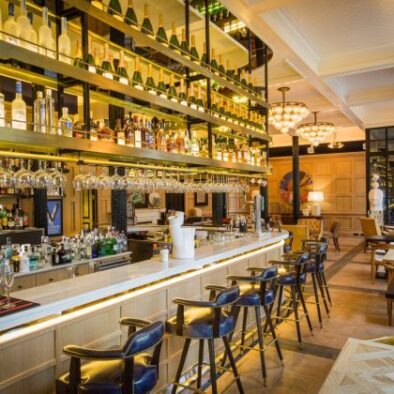
The restaurant Only You Boutique Hotel brings a bit of the Mediterranean coast to Chueca district. Chef Carlos Martín who has worked at some of the top restaurants in Spain (El Celler de Can Roca and Mugaritz) and brings all of his talent and knowledge to this new project. Dishes like almadraba tuna carpaccio with green mustard and horseradish, cod “coca” with crudité and stewed peppers, crunchy oxtail with foie and mushrooms with Ibizan spices, squid ink rice with asparagus and alioli and the duck confit, mushroom and leek bechamel canelone are just some of the highlights you can indulge in. A very interesting proposal for those seeking a romantic restaurant near Gran Via in Madrid.

The Torres brothers are famous chefs in Spain. Their TV show has been successful for years and they were always eager to open a restaurant in Madrid, and you can tell they have well done!. They opted for a restaurant that could offer fine dining near the Royal Palace, a location that can suit both locals and visitors to Madrid alike.
They set up shop right next to the Royal theater in, what use to be, one of the stables inside the elegant Hotel Meliá Gran Palacio de los Duques.
Menu
The Dos Cielos menu developed alongside Damián González who runs the kitchen and exudes talent, technique, and care. If you are looking for a restaurant that offers fine dining near the Royal palace Dos Cielos is your place.
The menu is short, with some 15 dishes displayed. But you should not be misled by the rather short number of options; that may not always ease the task of selecting your meal! And this Is exactly what happens at Dos Cielos. Part of the menu is composed of dishes that bring new light to traditional ingredients from Madrid.
Overall Review
A fantastic option to enjoy fine dining near the Royal Palace. The restaurant offers a short menu, well balanced and with dishes that are generous, well-presented, and rooted in Madrid and the chef´s family culinary tradition.
The tableware and the cutlery have been carefully selected and it almost seems the tables, with its blackboards, marble and wood, have been chosen to enhance the display of the dishes served. Everything is thought out, measured and the venue is perfect for this purpose too: brick walls, leather on the seats, large windows that bring loads of light to the dining area.
A really pleasant restaurant indeed, romantic, local, with great service and excellent food. The wine list, by the way, is also excellent.
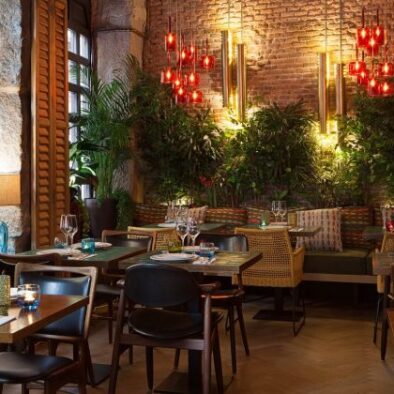
Los Espetinhos is a Brazilian-style buffet located in the heart of Madrid. The restaurant is beautifully and vibrantly decorated. Enjoy some of their signature cocktails and all the delicious roasted meats you can handle.
Espetinhos is an option for those who enjoy Brasilian espetinhos and meat. If this is your case and you feel like eating Brazilian during your stay in Madrid, this can be a valid option for you.
Menu
Los Espetinhos is famous for two main things, its Brazilian rodizios, and its espetinhos, and it is from this second one from which it takes its name. The Brazilian rodizios is a typical food from Brazil. The meat is served at the table itself and served at that moment whilst carved by their steakhouse masters. As a customer, you can repeat any of the meats served.
Meat is also accompanied by different types of garnish, such as feijoada or fried plantain, but where you can also find more classical options like fried potatoes or salad

A curated selection made by our local experts with the best restaurants in Santiago de Compostela, a beautiful and historic city in Galicia. … Read More
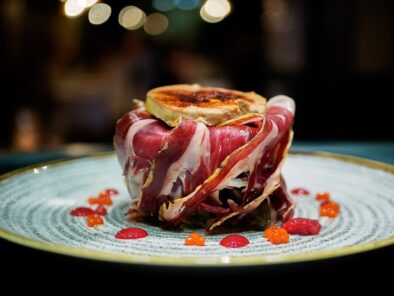
A curated selection made our local experts with the best restaurants in Bilbao to enjoy a fantastic stay in this city. … Read More
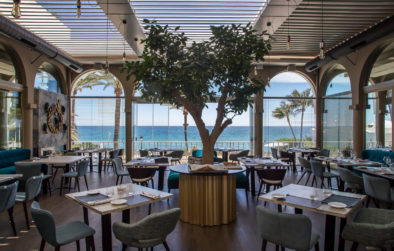
A curated selection by local experts with our best restaurants in Marbella to enjoy a fantastic stay. There are plenty excellent ones to choose from. … Read More
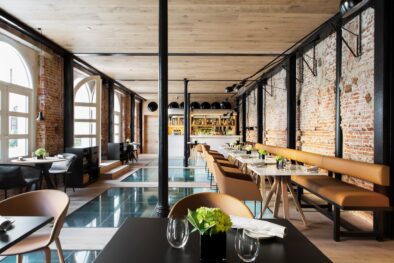
A selection of the best restaurants in Spain to enjoy a great stay. Restaurants for all budgets and that cover different styles of Spanish cuisine. You will also find restaurants that are close to some of the main tourist attractions to ensure you enjoy great food without losing too much time during your trip itinerraries … Read More
is proudly powered by WordPress